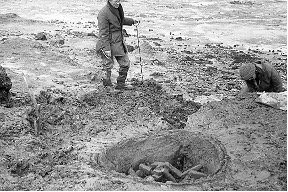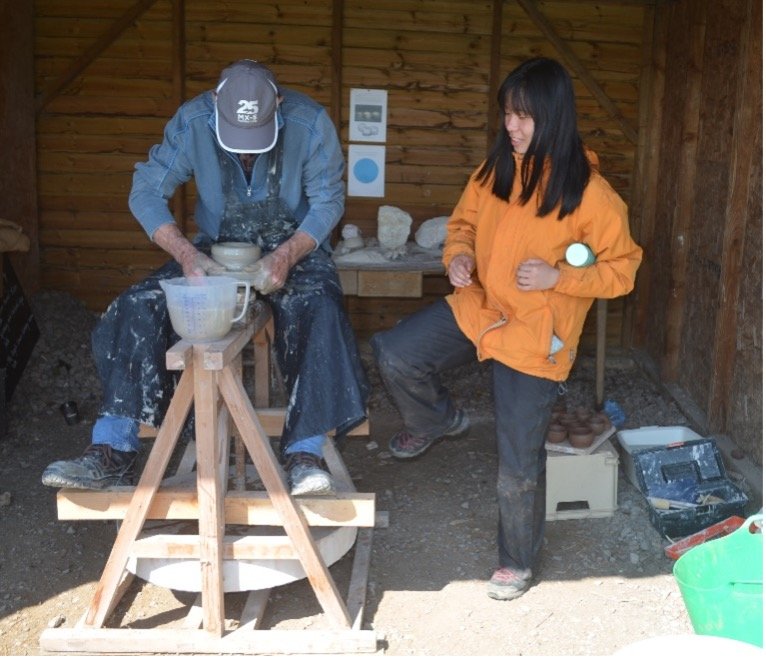Over the Easter holidays we welcomed staff and students from UCL and Archaeology South East to Butser for their ‘archaeotech’ course- a chance for the students to get hands on with some experimental archaeology.
In the process they built a wonderful Roman kiln at the farm. Below Bill Sillar, Professor of Archaeology and Technology in Society at UCL Institute of Archaeology shares the process behind this latest construction.
UCL, Institute of Archaeology students spent a week at Butser building a Roman kiln, working with our colleagues from Archaeology South East.
The completed Kiln construction at Butser.
The kiln is based on an early 2nd century Roman kiln from the salt marshes of the Medway Estuary, originally excavated in 1975 by Ian Jackson and the Upchurch Archaeology Research Group (UARG). This is one of at least 18 similar kilns in the intertidal area investigated by UARG, which are thought to be derived from Late Iron Age, La Téne style, kilns. The excavation was difficult as it needed to be undertaken during a limited low-tide period, before the site was again submerged by the rising tide.The Roman potter built this kiln into a bank by the riverside, which is partly why it was so well preserved. This was an up-draft kiln where the pottery was placed on bars which were in turn supported above the furnace by pillars and a thick lip around the base of the kiln. The superstructure of the kiln was not preserved but turfs or pottery sherds could have been used. The stokehole was relatively small which may reflect the type of fuel used. It has been suggested that these kilns were short lived and that potters had a ‘knockdown and rebuild’ approach where the kiln bars could be reused on a new kiln, however the excavators of this kiln identified evidence of re-lining showing that structures could be ‘re-vamped’ and used on more than one occasion. We chose this kiln as our referent partly due to the generosity of Ian Jackson and colleagues in sharing their understanding of these kilns and allowing us to study the assemblage of pottery excavated from within and beside the kiln.
Cross section from the kiln excavation
Plan from the kiln excavation
Photograph from the original excavation
Photograph from the original excavation. Note central pillars and thick lip at base of the kiln upon which the kiln bars were supported.
At Butser we built our replica kiln into a bank in the area between the Iron Age enclosure and the Roman villa. This both reflected the chronology of an early Romano-British Kiln and contributes to the ‘pyro-technology’ area that Butser is developing for future metal working, pottery firing and (hopefully) glass working. The chalk geology of Butser is very different to the estuarine silt of the Medway, so we had to import clay, but like the Roman potters we mixed the clay with organic material (grass cuttings) for the lining of the kiln chamber. We also made kiln bars and the pedestal supports out of clay well-tempered with chaff and grass. It might have been possible to do this somewhat more quickly than the six days we took, but we benefited from the gradual drying as we slowly layered the clay onto the sides of the pit and formed the lip support in the interior of the furnace and the exterior flue.
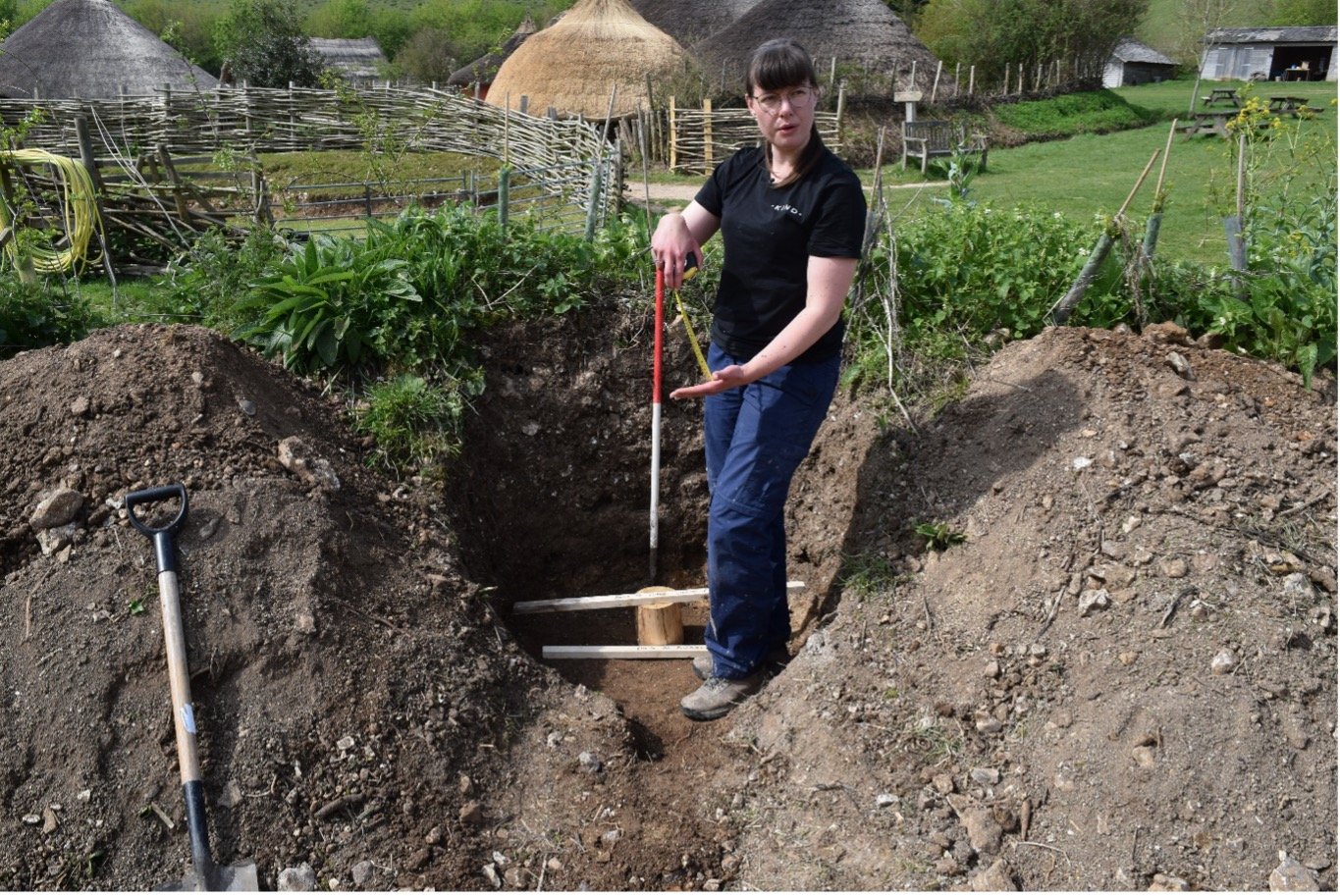
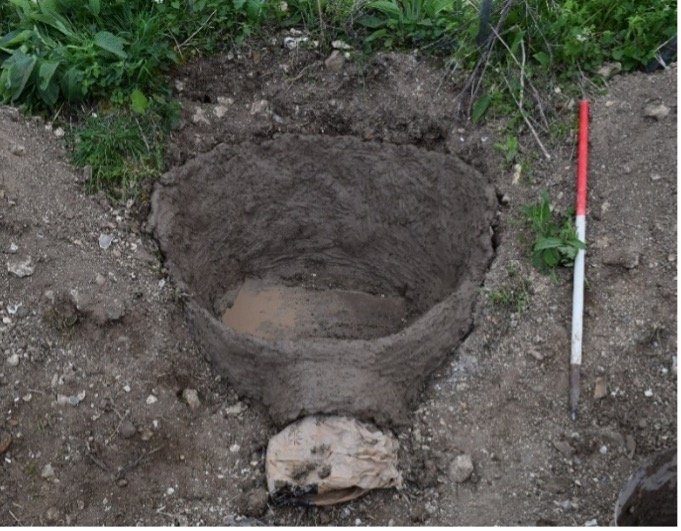
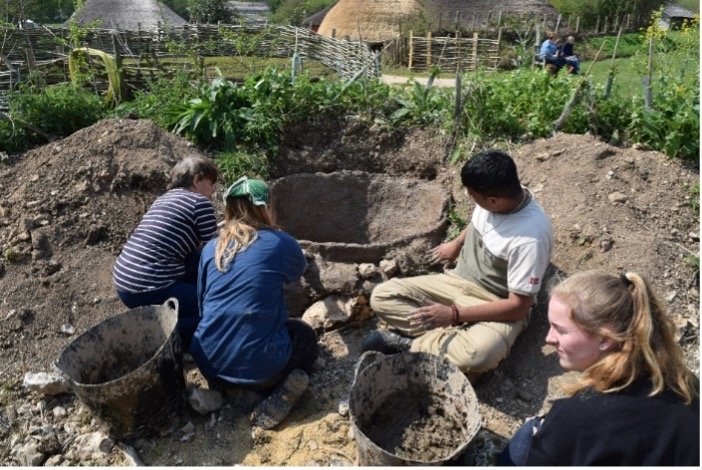

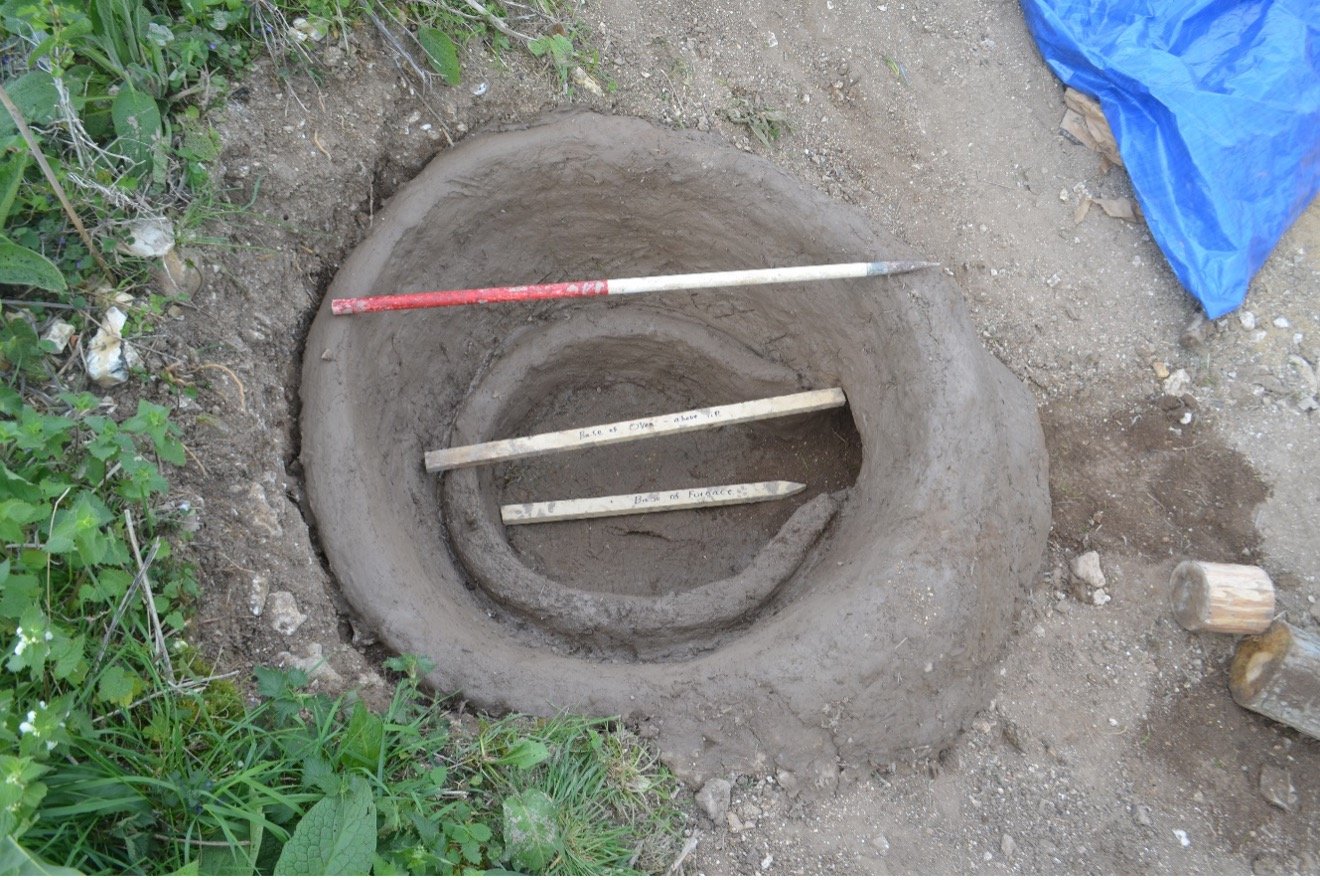
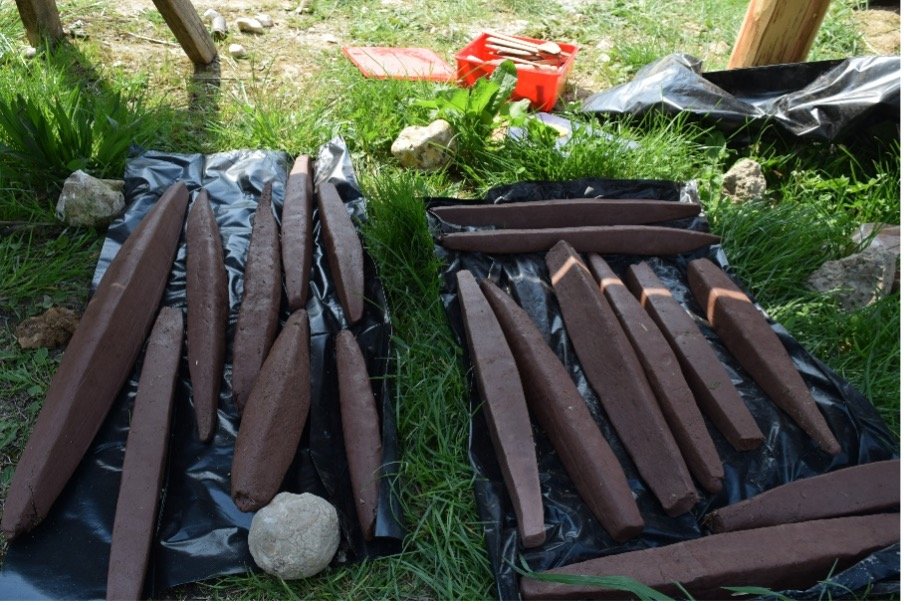
We brought the original excavated assemblage of pottery and kiln furniture to Butser to look at while we were working on the kiln build. This helped the students to understand the connection between the archaeological site and their experimental work. It also provided us with insights into the materials and forming of the kiln furniture and the pottery. We were very grateful that Ian Jackson came to Butser to discuss his excavation with Anna Doherty who has undertaken an initial analysis of the pottery assemblage. Most of the pottery was made on the wheel. In the Roman period this would have been a kick wheel, where the potter uses their foot to push a circular base that transfers the momentum to the wheel on which they form the pots. We brought a kick wheel to Butser and have started to make pottery to imitate some of the original Roman forms. This is something we hope to develop in future months to make enough pottery to fill the kiln. We will allow the kiln to dry out until late September when we will return with another group of UCL students to start to use the kiln, and try out different fuels and coverings. We will let you know how that goes…..
Using the kick wheel
Louise Rayner shows students the pottery assemblage and kiln furniture from the original kiln excavation
Thank you very much to Bill and all the staff and students from UCL and Archaeology South East for building this fantastic kiln here at Butser . We can’t wait till it gets fired up for the first time in September!
